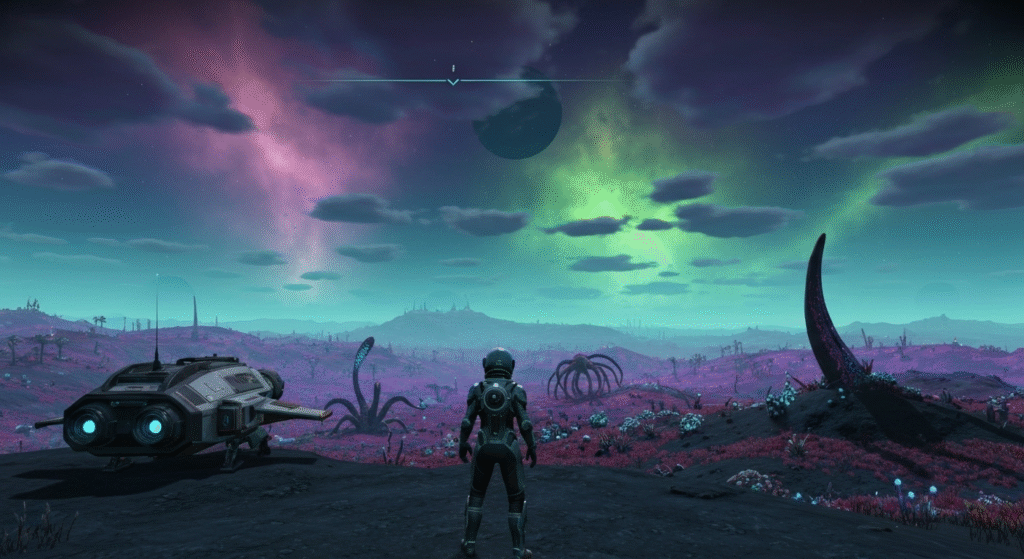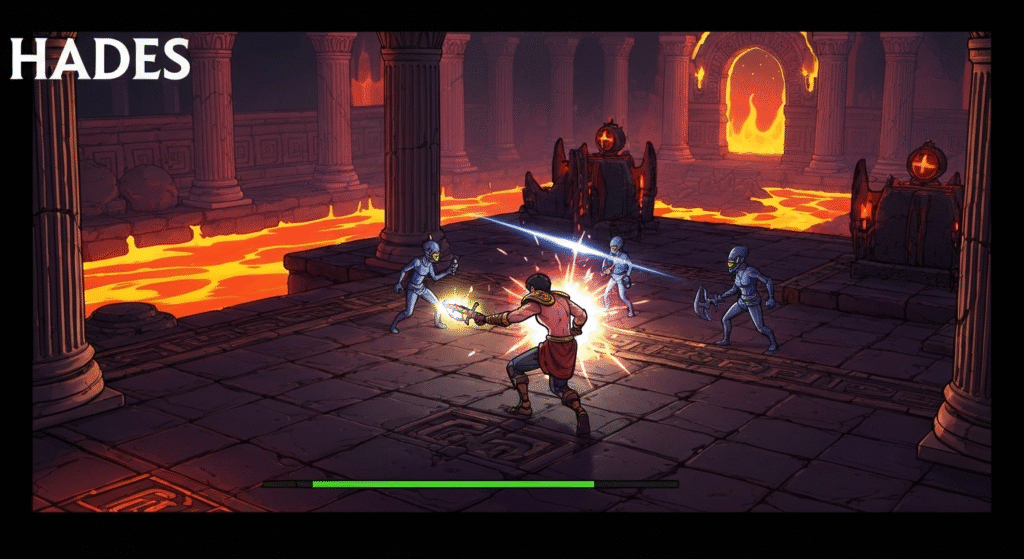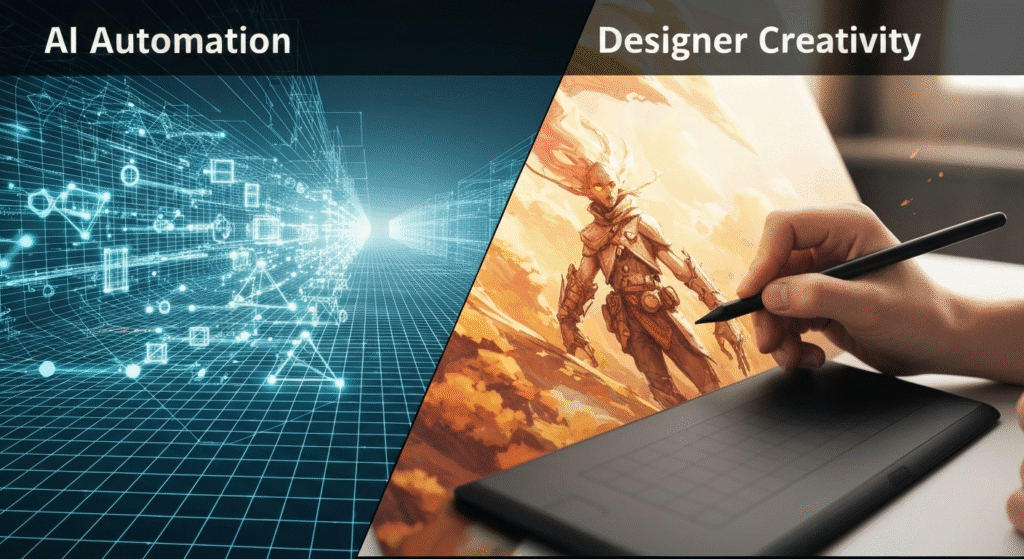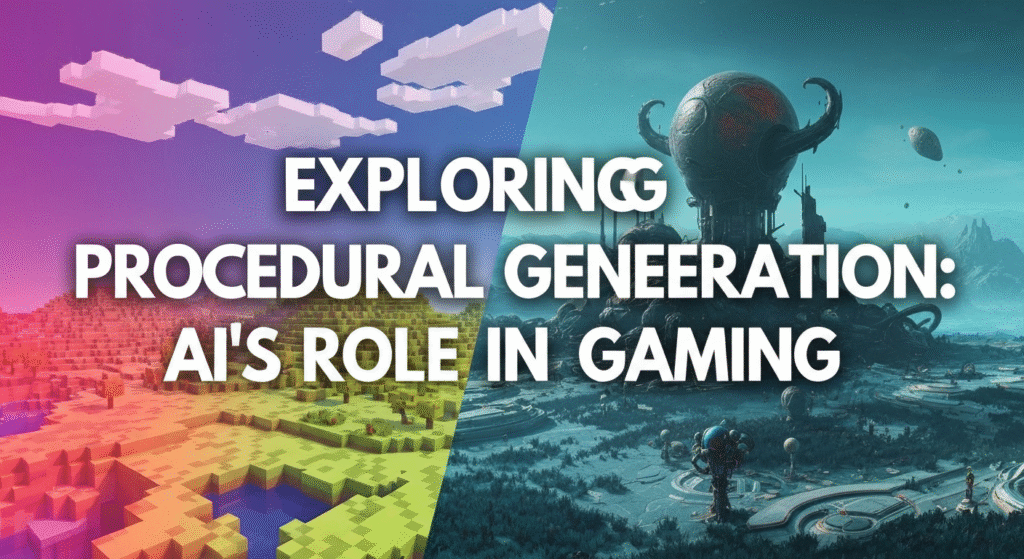Have you ever started a new game of Minecraft and marveled at the unique world laid out before you? A world with sprawling deserts, towering mountains, and deep oceans that no one, not even the developers, has ever seen before. Or maybe you’ve dived into a roguelike game like Hades, where every escape attempt from the underworld is a fresh, unpredictable challenge. This feeling of infinite possibility is often powered by a fascinating technology called procedural generation, a corner of AI that has completely changed how we play.
My fascination with AI isn’t just about chatbots or image creators; it’s about how algorithms shape our entertainment. For years, I’ve been exploring and writing about artificial intelligence, driven by a simple curiosity to understand how it works. Zain Mhd’s passion lies in demystifying complex topics, connecting the dots between dense research and the cultural experiences we all share, like video games. This journey into procedural generation wasn’t for a formal paper; it was to satisfy my own questions about the “magic” that builds these endless digital worlds. I wanted to see past the marketing claims and understand the balance between code and creativity.
Let’s break down what I discovered when I started digging into the games I love. It’s a mix of clever math, artistic direction, and a touch of planned chaos that makes modern gaming so compelling.
What Exactly Is Procedural Generation?
Before we dive into specific games, it’s important to understand what we’re talking about. Procedural generation is a method where content is created by an algorithm rather than being manually designed by a developer. Think of it like this: instead of a developer building a house brick by brick, they write a set of rules for how a house should be built. The computer then follows these rules to construct countless unique houses, all of which feel distinct but follow the same core principles.
This process relies on algorithms and a starting value known as a “seed.” The seed is just a number that kicks off the generation process. If two people use the same seed in a game like Minecraft, they will get the exact same world. This shows that it’s not truly random; it’s a complex but repeatable mathematical process. This is the key difference between procedural generation and pure randomness. Randomness is complete chaos, while procedural generation is controlled chaos—it creates variety within a set of carefully defined constraints.
This approach has fundamentally changed game development. It allows small teams to create vast universes and ensures that players have a new experience every time they log in.
| Feature | Hand-Crafted Design | Procedural Generation |
| Creation Process | Manually designed by artists and developers. | Created on-the-fly by computer algorithms. |
| Scale | Limited by time and team size. | Can be nearly infinite in scale. |
| Replayability | Low; the content is the same every time. | High; each playthrough offers a new layout or world. |
| Consistency | High; allows for precise storytelling and pacing. | Can be unpredictable; sometimes leading to strange or uninspired results. |
| Developer Control | Total control over every element. | Control is indirect, through rules and parameters. |
My Personal Journey Through Generated Worlds
The best way to understand procedural generation is to see it in action. I spent time not just playing, but actively analyzing a few games that rely heavily on this technology. My goal was to see the algorithms “at work” and understand how they impacted my experience.
The Endless Discovery of No Man’s Sky

No Man’s Sky is perhaps the most famous (and at times, infamous) example of procedural generation. The game boasts over 18 quintillion planets, a number so large it’s practically incomprehensible. This is only possible through algorithms. As I warped from one star system to the next, I was genuinely struck by the sheer variety. I landed on frozen planets with strange, crystalline flora and radioactive worlds where robotic creatures roamed.
What I found fascinating was how the game’s systems layered different procedural elements:
- Terrain: An algorithm like Perlin noise creates the natural-looking shapes of mountains, valleys, and coastlines.
- Flora and Fauna: The game has a library of creature parts (legs, heads, torsos) and plant components. Algorithms then mix and match these parts, adjust their sizes and colors, and assign them behaviors to create unique species for each planet.
- Atmosphere: Rules determine the color of the sky, the type of weather, and the toxicity of the air.
However, after about 30 hours, I started to notice a pattern—what many players call “procedural sameness.” While every planet was technically unique, they began to feel familiar. I could see the underlying formula: the same types of rock formations appeared, and the creatures, while different, were clearly assembled from the same set of building blocks. This was my first big lesson: procedural generation is amazing for creating scale, but it struggles to create meaningful, curated detail without a human touch.
The Perfect Challenge of Hades

On the other end of the spectrum is Hades. It’s a roguelike, a genre built on the idea of replaying the game over and over. Here, procedural generation isn’t used to create a vast universe but to ensure every escape attempt from the Greek Underworld is different.
Here’s how it works: the game has a pool of pre-designed rooms, each with different enemy layouts, traps, and rewards. The algorithm’s job is to:
- Stitch these rooms together into a unique sequence for each level (Tartarus, Asphodel, etc.).
- Randomly assign “Boons” from different Olympian gods, which give you new powers.
- Determine which mini-bosses or special events you’ll encounter.
This approach felt much more focused. The human designers at Supergiant Games created the building blocks—the rooms, the enemies, the dialogue—and the AI simply rearranged them. This blend was perfect. The gameplay was always fresh and unpredictable, but the hand-crafted story, character interactions, and art style provided the emotional core that a purely procedural game can lack. It taught me that procedural generation is often at its best when it serves, rather than replaces, human design.
The Technology Behind the Magic
Digging a bit deeper, I learned that not all procedural generation is the same. Developers use different techniques depending on what they want to create. While you don’t need a computer science degree to appreciate it, understanding the basics makes you see games in a whole new light.
Different Flavors of Generation
There are many algorithms developers use, but a few common ones pop up repeatedly.
- Noise Algorithms (like Perlin Noise): This is a cornerstone for creating natural-looking textures and terrain. It generates smooth, pseudo-random patterns that look far more organic than pure static. It’s why the mountains in Minecraft and the rolling hills in No Man’s Sky look so convincing. You can learn more about its creator and applications in this overview from UCLA’s Department of Mathematics.
- L-Systems (Lindenmayer Systems): Originally developed to model plant growth, L-systems are sets of rules for generating complex, branching structures. In games, they are perfect for creating realistic-looking trees, ferns, and even branching dungeon corridors or river systems.
- Binary Space Partitioning (BSP): This is a popular technique for generating dungeon layouts. The algorithm takes a large area, splits it in two, then splits those two parts, and so on. After a few splits, it places a room in some of these smaller areas and then connects them with corridors. This ensures that the dungeon has a logical, connected layout.
| Technique | Primary Use Case | Example Games |
| Perlin Noise | Generating realistic terrain, clouds, and textures. | Minecraft, No Man’s Sky |
| L-Systems | Creating branching structures like plants and trees. | Spore, various indie games for foliage. |
| BSP Trees | Designing structured layouts like dungeons and buildings. | DOOM (early example), Dwarf Fortress |
| Cellular Automata | Forming natural cave systems and organic shapes. | Terraria, Spelunky |
Finding the Balance: AI Automation vs. Designer Creativity

My exploration made one thing crystal clear: procedural generation is not a magic button for creating a great game. It’s a tool, and like any tool, its effectiveness depends on the person using it. The tension between AI automation and human creativity is where the most interesting results happen.
Advantages of Procedural Generation
- Massive Content on a Budget: Small teams can create games with hundreds of hours of content, something that would be impossible with manual creation.
- Endless Replayability: Games like The Binding of Isaac have near-infinite replay value because no two runs are ever identical.
- Emergent Gameplay: When systems interact in unexpected ways, players can have unique experiences that even the developers didn’t plan for. This sense of surprise is a powerful motivator.
The Limitations and Pitfalls
- The Risk of Emptiness: A huge, procedurally generated world can often feel wide but shallow. Without curated points of interest, exploration can become boring.
- Lack of Narrative Pacing: A hand-crafted level is designed to have a certain rhythm—moments of tension, relief, and discovery. Procedural levels can sometimes feel jumbled or nonsensical.
- The Illusion Can Break: As mentioned with No Man’s Sky, experienced players eventually start to recognize the patterns. Once you see the algorithm, the magic fades, and the world can feel less like a place and more like a math problem.
The sweet spot seems to be a hybrid approach. Games that use procedural generation to handle the large-scale structure but fill that structure with hand-crafted encounters, stories, and set pieces often provide the best of both worlds. It’s about letting the AI do the heavy lifting of creating the canvas, so the human artists can focus on painting the masterpiece.
Frequently Asked Questions (FAQs)
What is the difference between procedural and random generation?
Procedural generation uses algorithms to create content that appears random but is actually determined by a starting “seed.” This means it’s repeatable. True random generation would be complete chaos, likely resulting in unplayable or nonsensical content.
Can a procedurally generated game still have a good story?
Absolutely. Many games, like Hades, use a hybrid model. The level layout is procedural, but the story events, character dialogue, and major plot points are hand-crafted and triggered as you progress. This gives you both narrative depth and gameplay variety.
Is procedural generation only for big open-world games?
Not at all. It’s used across many genres. Roguelikes use it for dungeon layouts, strategy games use it to generate maps, and even puzzle games can use it to create new challenges for the player.
Why do some procedurally generated games feel boring?
This often happens when a game relies too heavily on procedural generation without enough human-designed elements. If the algorithm’s rules are too simple or the assets it uses are too limited, the resulting content can feel repetitive and uninspired, leading to that “procedural sameness” feeling.
Conclusion: A Tool for a New Kind of Creativity
After diving into the code, playing the games, and reading up on the theory, my appreciation for procedural generation has grown immensely. It’s not the “end of game developers,” as some once feared. Instead, it’s a powerful instrument that has opened up new frontiers for creativity. It allows for experiences at a scale we’ve never seen before and provides endless replayability that keeps communities engaged for years.
The most important thing I learned is that the best results come from partnership. When a clever algorithm is guided by a strong artistic vision, the result isn’t just an endless world—it’s a world worth exploring. The AI generates the possibilities, but it’s the human touch that gives those possibilities meaning. As AI continues to evolve, I can only imagine the incredible, unpredictable, and fascinating game worlds that await us.


